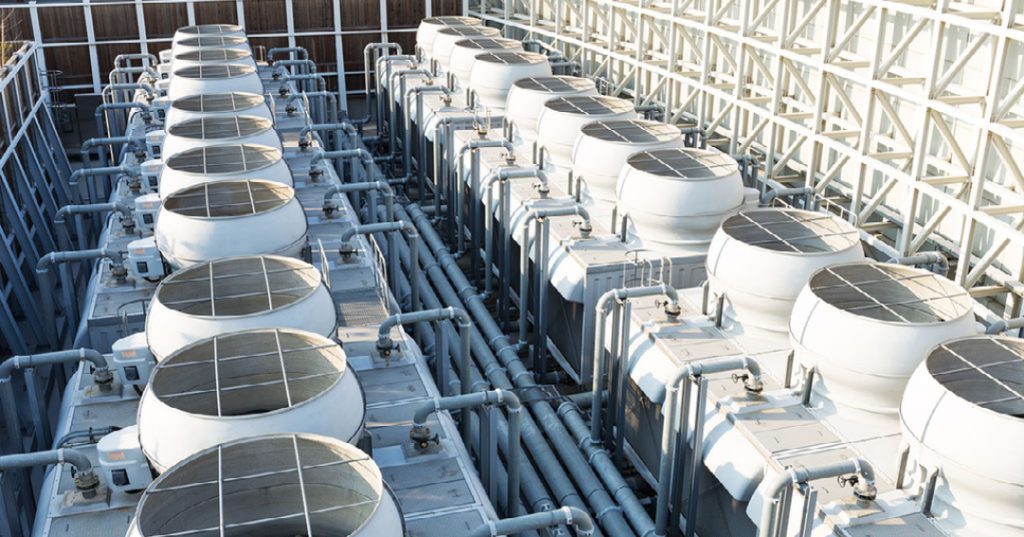What is a Cooling tower Water treatment?
Cooling tower water treatment is a method to drain out harmful contaminants from your cooling tower feed water. In industrial processes, cooling is accomplished by means of various mechanisms requiring different equipment. The most widely used industrial cooling system is the use of a cooling tower. The specific configuration of your system depends on the following:
- What sort of cooling tower you have
- Manufacture-recommended standard criteria for cooling towers and equipment
- Chemistry in the circulatory water
- Regulatory criteria for discharge
- If blowdown is treated for reuse in the cooling tower
- The heat exchanger form
- Concentration period
Cooling tower operating conditions, including temperature, scale, flow, construction metals, and process variation, are different for each customer. We are leading the industry in developing the most robust and reliable solutions for cooling tower water treatment.
How is the Cooling Tower used in industries?
Cooling towers dissipate heat from recirculating water to ambient air. Heat is releasing out from cooling towers to the atmosphere via the evaporation process. As a consequence, the cooling towers also use large quantities of water by design. Water treatment for cooling towers is an integral part of process operations in many industries. However, it is to reduce water loss and eliminate zinc, chromates, and carbonate from the water used in the cooling towers.
Industries use cooling towers to preserve heat transfer surfaces and also to enable process heat removal and product throughput. Cooling towers are for comfort cooling in industrial or building applications. Water from cooling tower systems collects and consumes airborne pollutants continuously. It also leads to the excessive generation of deposits. These deposits contribute to a decrease in the efficiency of heat transfer and an increase in operational and maintenance costs. To ensure effective operation and long life, we also provide a wide range of filtration solutions to eliminate suspended solids and pollutants.
How is the cooling tower water treatment system working?
The proper treatment of cooling tower water is necessary to keep output running smoothly and prevent costly damage to cooling tower equipment. Standard cooling tower water treatment systems will typically include the following steps:
Cooling tower makeup water intake:
Makeup water from the cooling tower is drawn from its source, raw water, city water, or other surface water source. Treatment is executing, depending on the quality of this water. If required, it would generally remove hardness and silica or stabilize and change the pH. The proper treatment optimizes the evaporation period of the tower and moreover minimizes the bleed rate of the water.
Filtration and Ultrafiltration:
In the next step, we run the cooling tower water through a different type of filtration process to eliminate any suspended particles. Removal of suspended solids upstream can also help protect membranes and ion exchange resins from polluting in the pre-treatment process. Depending on the filtration method, the suspended particles may be removed to less than one micron.
Ion exchange or water softening
If your makeup water has a high hardness, treatment can be used to remove the hardness. A softening resin with an extreme acid cation exchange process may be used. The resin is imposing with a sodium ion and has a higher affinity to calcium, magnesium, and iron as the hardness moves through it. So they will catch the molecule and release the sodium molecule into the water. These contaminants cause scale and also rust if it’s present.
Chemical addition:
Usually, this method requires the use of chemicals, such as:
- Corrosion inhibitors designed to neutralize acidity and protect metal components
- Algaecides and biocide to reduce microbial and biofilm growth
- Scaling inhibitors to prevent pollutants from forming scale deposits.
By treatment before this stage will help to reduce the number of chemicals required to treat water.
Side-stream filtering:
If cooling tower water is recirculating in the system, use a side-stream filtering unit to eliminate any pollutants entered by drift contamination. If the cooling tower water treatment system needs side-stream filtration, approximately 10% of the flowing water would be filtered through. It usually consists of high-quality multimedia filtration devices.
Blowdown Treatment:
The last phase of treatment needed for cooling tower water is blowing or bleeding from the tower. Blowdown is the flushing of a part of the high mineral content of cooling tower system water into the drain and replacing it with fresh water. This method dilutes the system’s mineral water concentrations, which are gradually rising due to water evaporation.
Depending on the quantity of water needed, the cooling plant also requires to circulate for proper cooling power; the plants will want to recycle and recover their water. Some post-treatment achieves this in the form of reverse osmosis or ion exchange. This helps liquids and solid waste concentrate and dispose of, while the processed water will be flowing back to the tower and is reused.
EndNote
Jateen Trading Co. provides the most innovative options for cooling water treatment on the market. It is specifically designed to improve and optimize your production performance and the efficiency of heat transfer. Each cooling tower water treatment program is unique. However, our cooling tower treatment solutions do more than just protect your cooling water systems from corrosion, deposits, and microbiological growth.
We are one of the leading chemical industries in developing the most robust and reliable cooling tower water treatment solutions. Our team of professional technicians and industry experts will work with you to create a solution that suits your needs. Moreover, our cooling tower treatment solutions optimize your cooling water system’s life.

